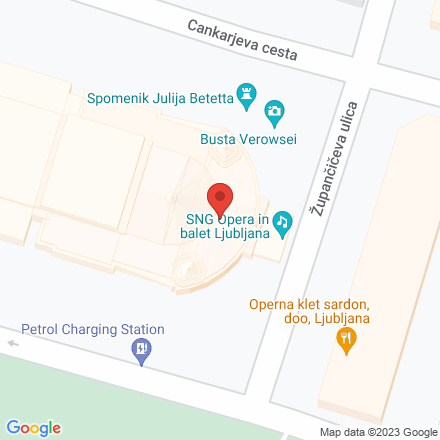Slovenian National Opera and Ballet Theatre of Ljubljana
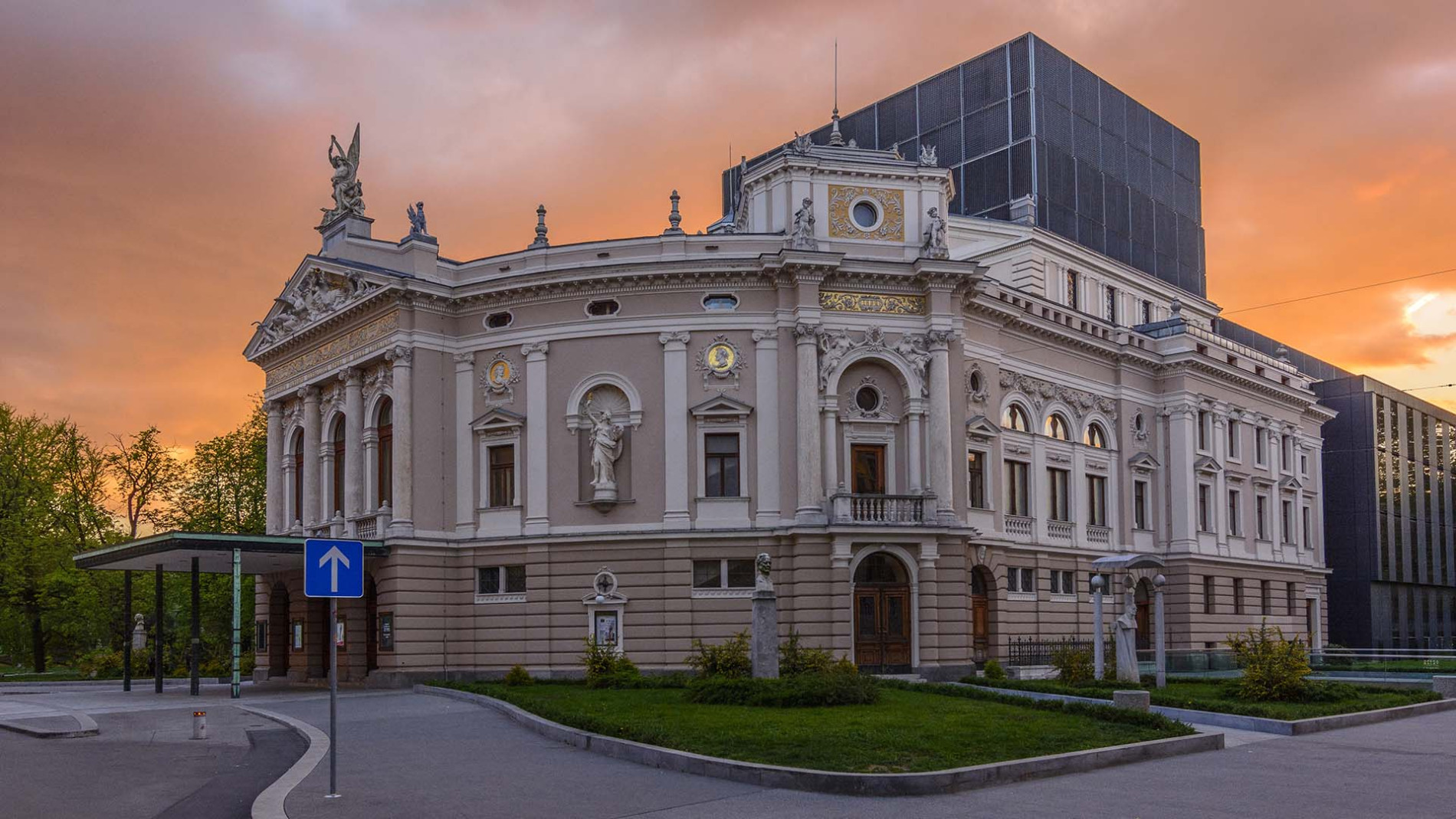
© Janez Zalaznik
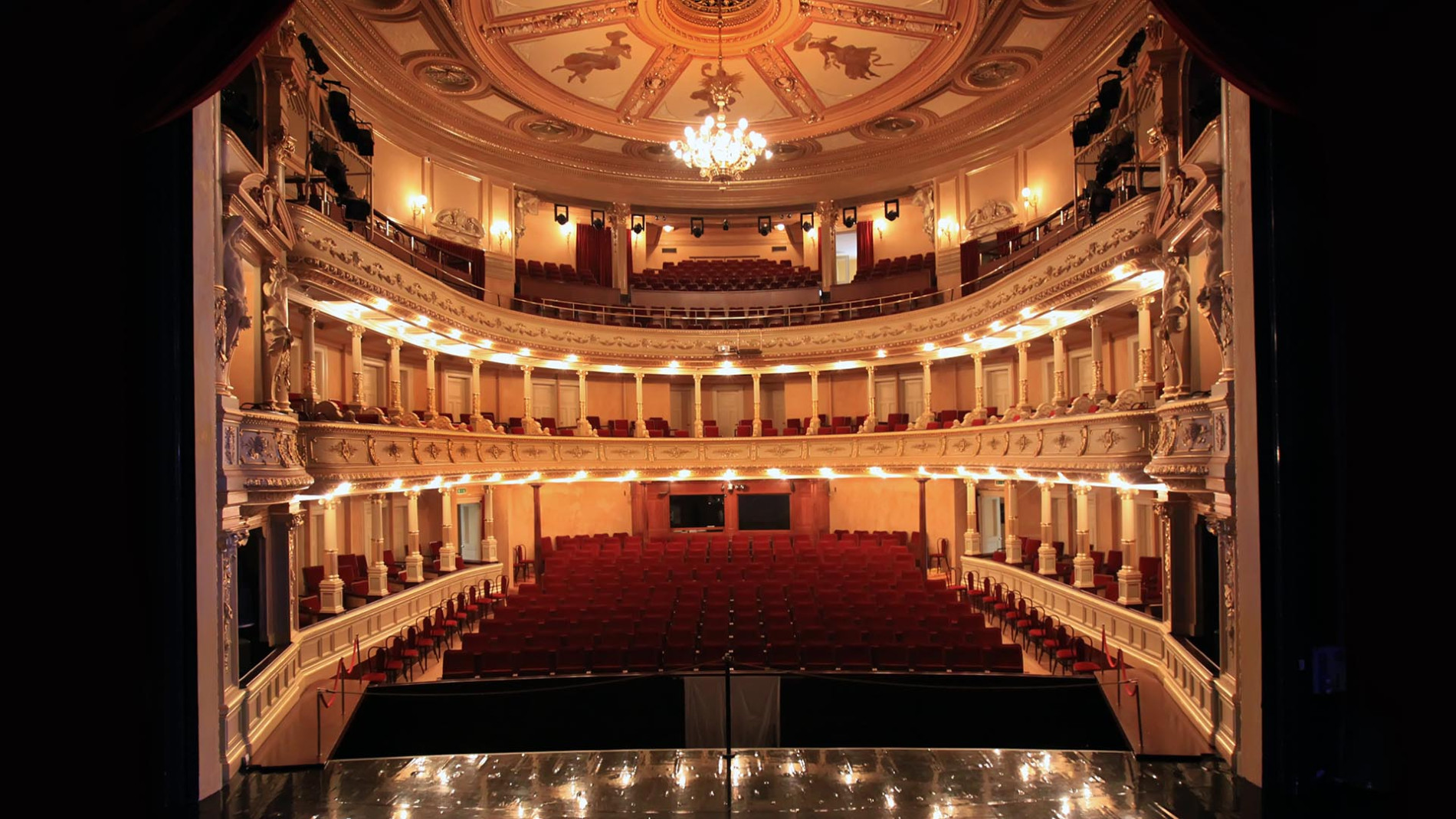
© Darinka Mladenovič/ Mostphotos

© Luka Esenko
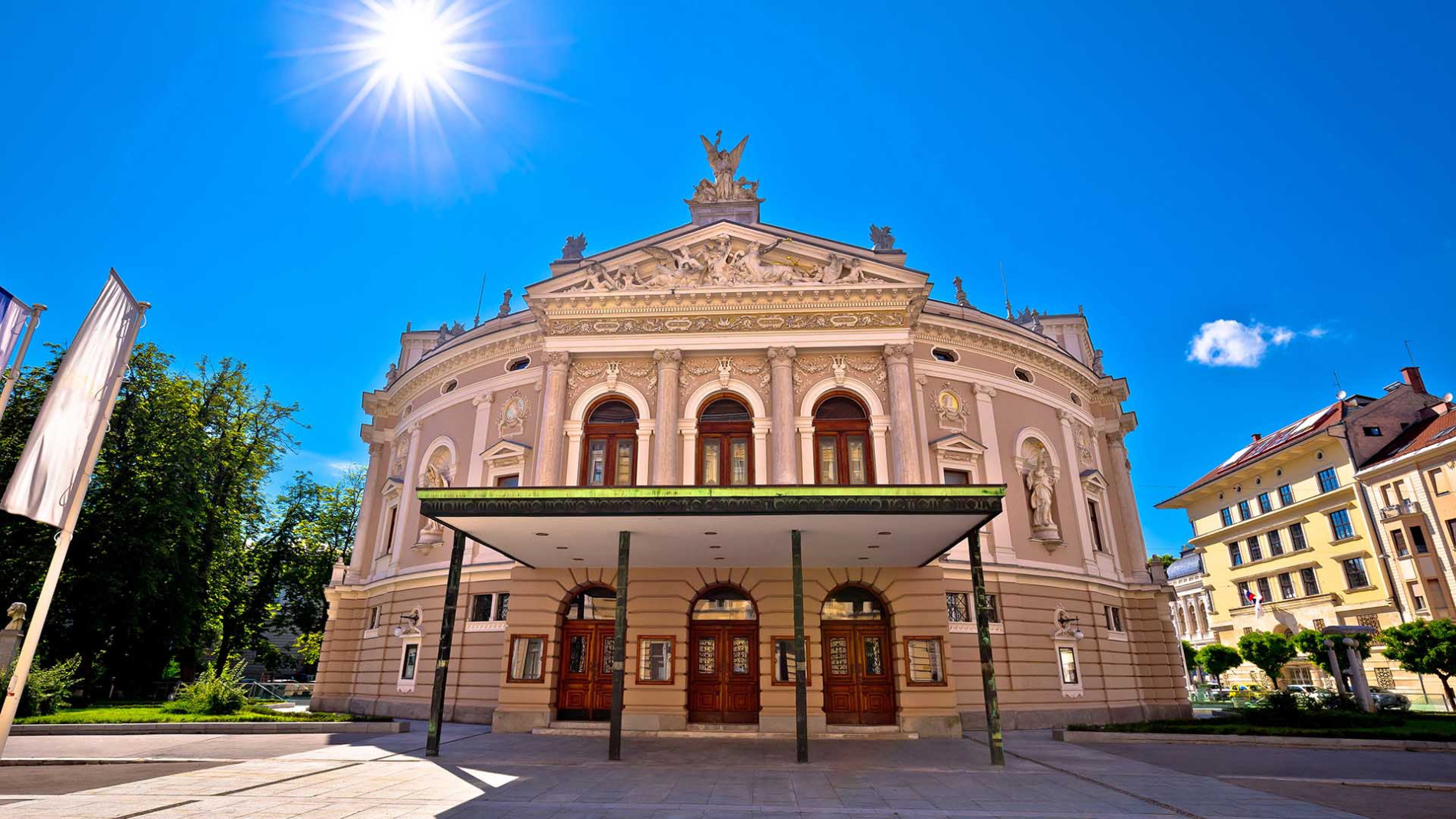
© Mostphotos
The ensemble of the Slovenian National Opera and Ballet Theatre of Ljubljana (SNG Opera in balet Ljubljana) performs an extensive repertoire of classical and modern operas, ballets and concert works. Each season it gives approximately 150 performances, both at home and abroad. Its opera and ballet ensembles and orchestra have enjoyed successful collaborations with Slovenian and international artists and producers. The Theatre's most acclaimed international co-production projects of recent years include Faust, Aida, The Nymphs of the Rhine and The Love for Three Oranges, to name just a few.
The theatre building, constructed in 1892, has a varied history. At the turn of the 20th century it housed first the German Theatre (Nemško gledališče) and then the Provincial Theatre (Deželno gledališče). 1918 saw the establishment of the theatre's opera and ballet ensembles and orchestra, which, after the Second World War, began to tour outside the country and receive international acclaim.
Schedule
The Theatre's Information Centre and Box Office are open 10:00-17:00 Monday to Friday.
Lokacija
The Ljubljana Opera House, previously the home of the Provincial Theatre (Deželno gledališče), was built between 1890 and 1892 to a neo-Renaissance design by the Czech architects Jan V. Hrasky and Anton Hruby. Before the construction of the German Theatre (the present Drama Theatre) in 1911, the building was a venue for productions in both Slovenian and German, and afterwards only for those in Slovenian.
The Opera House's façade has two niches adorned with Alojzij Gangl's allegorical statues of Tragedy and Comedy. The building's characteristic appearance is mainly due to the richly adorned front façade with Ionic columns supporting a majestic tympanum above the entrance. The allegorical sculptures in the tympanum represent Poetry and Glory, and the figure with a torch above them - another work by Alojzij Gangl - an allegory of Genius. The stone pedestals in front of the building support the busts of the Slovenian theatre artists Anton Verovšek and Ignacij Borštnik sculpted by France Kralj in 1921, and the pedestal by the side of the building Stojan Batič's portrait sculpture of Julij Betetto.
Accessible to persons with movement disabilities
- Designated parking space for persons with movement disabilities
- Designated path from the car park/public transport to the building
- Designated entrance for persons with movement disabilities
- Designated sanitary facilities accessible to persons with movement disabilities
- Adequate access to the building for persons with movement disabilities (hallways, staircase, lift, etc.)
- Accessible event space for persons with movement disabilities
- Accessible information desk/cash register for persons with movement disabilities
Accessible to the deaf and hard of hearing
- The event space has a hearing loop
- The information desk/cash register has a hearing loop
Contacts
Župančičeva ulica 1 1000 Ljubljana
Phone: +386 (0)1 24 1 17 66, +386 (0)31 696 600
Email: [email protected]
Web site: Slovenian National Opera and Ballet Theatre of Ljubljana
The Ljubljana Opera House, previously the home of the Provincial Theatre (Deželno gledališče), was built between 1890 and 1892 to a neo- Renaissance design by the Czech architects Jan V. Hrasky and Anton Hruby. The building's characteristic appearance is mainly due to the richly adorned front façade with Ionic columns supporting a majestic tympanum above the entrance; its façade features two niches adorned with Alojzij Gangl's allegorical statues of Tragedy and Comedy.
The year 1918 saw the establishment of the theatre's opera and ballet ensembles and orchestra and today - apart from some regular programme novelties, offered to its audience every season, the central Slovenian Musical Theatre boasts a wide repertoire of operas, ballets and concerts that derive from both modern and classical creativity, as well as around 150 season and off-season repeat performances on stages at home and abroad. Its opera and ballet ensembles and orchestra have enjoyed successful collaborations with Slovenian and international artists and producers. The Theatre’s most acclaimed international co-production projects of recent years include Faust, Aida, The Love for Three Oranges, Don Quixote, Prince Igor and The Rhine Nymphs, to name just a few.
The Opera House is also an attractive venue for holding social functions, ranging from award presentations to receptions and gala dinners, which may be placed on the stage.
Contacts
1000 Ljubljana
Capacities
-
Rooms 5
-
Area size 120
-
Theater seats 557
-
Banquet 100
-
Reception 140
Conference rooms
-
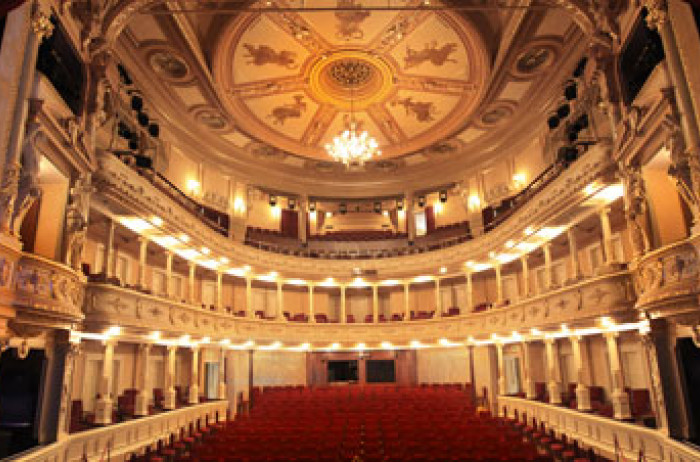
Opera Hall
(+54 if the orchestra pit is covered)
-
Theater
503
-
Classroom
-
-
Reception
-
-
Banquet
-
-
Size of the room
-
-
Ceiling height
0
-
-
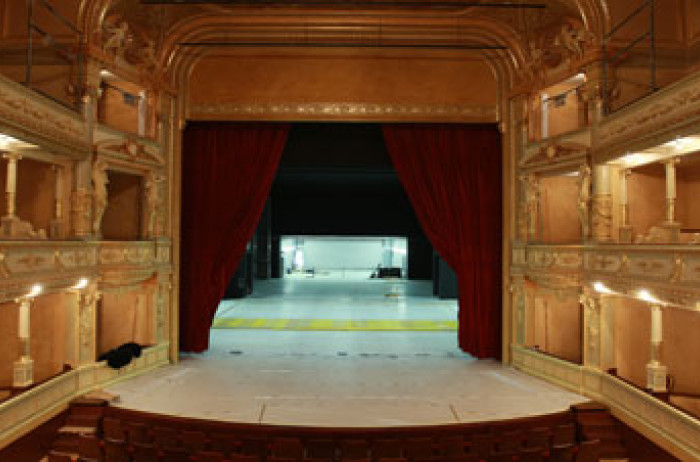
Stage
-
Theater
-
-
Classroom
-
-
Reception
140
-
Banquet
100
-
Size of the room
120
-
Ceiling height
20
-
-
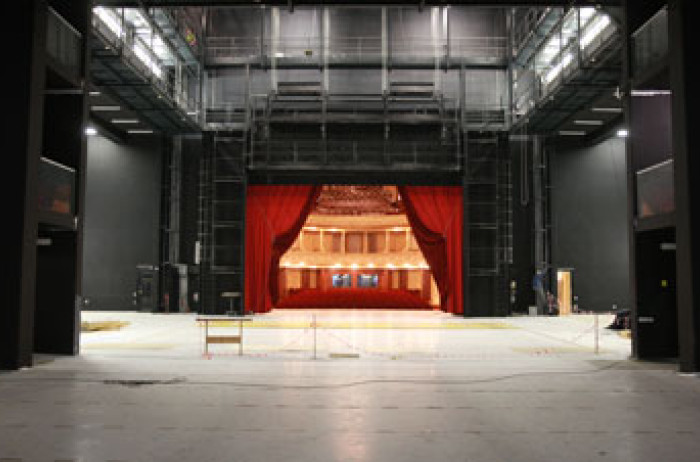
Backstage
-
Theater
-
-
Classroom
-
-
Reception
140
-
Banquet
100
-
Size of the room
120
-
Ceiling height
0
-
-
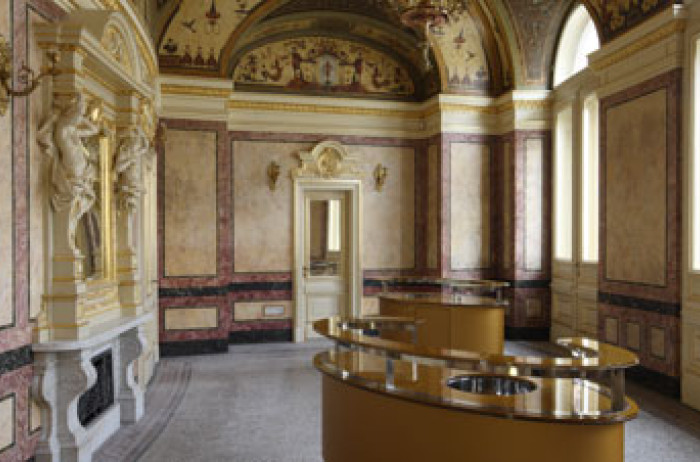
Foyer Orfej
-
Theater
-
-
Classroom
-
-
Reception
50
-
Banquet
-
-
Size of the room
40
-
Ceiling height
4.9
-
-

Bar
-
Theater
-
-
Classroom
-
-
Reception
100
-
Banquet
-
-
Size of the room
90
-
Ceiling height
3.5
-

